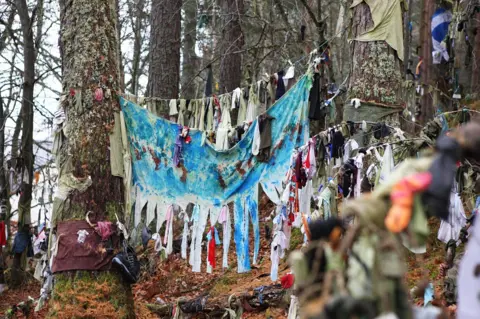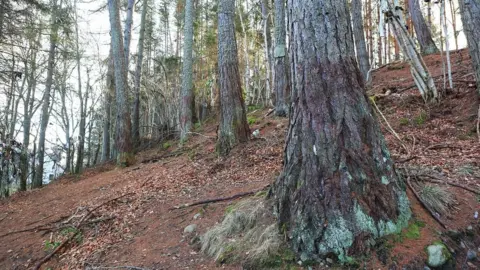Eerie tradition or eyesore? The Clootie Well clean-up row
 PETER JOLLY NORTHPIX
PETER JOLLY NORTHPIXIs it an ancient tradition or an eyesore? A row has broken out about a clean-up of the Clootie Well in the Highlands.
At the Black Isle village of Munlochy, it has been a tradition for centuries to take a cloot - Scots for a rag or a piece of cloth - and tie it to a tree after dipping it in a "healing well".
The site has been described as an important part of Highland history and culture, attracting visitors from across the world.
But some say the practice has got out of hand, with hundreds of non-biodegradable fabrics festooning tree branches and trunks.
Now an unscheduled clean-up of the site by a mystery person has sparked a fierce debate.
 PETER JOLLY NORTHPIX
PETER JOLLY NORTHPIXClootie wells and rag trees can be traced back to pagan and early Christian practices around healing.
The belief is a person will recover from an illness as the rag, dipped in a nearby holy well, disintegrates.
Munlochy's Clootie Well, in an area of woodland near Inverness, has been among the most striking of these sites, with tree branches covered in hundreds of items.
Local historian Dr David Alston said the site was engrained in the Black Isle's history.
'An eerie site'
"The well was dedicated to St Curidan so it is probably an early Christian holy well," he said.
In the past, some people were so convinced of the Clootie Well's healing properties that they were willing to leave their children alone in the dark.
Dr Alston said: "In 1870 it was said that there had once been a tradition of leaving sick children here overnight - if they recovered, it was attributed to the power of the well."
He added: "The problem today is that many of the cloots are of synthetic material and do not rot away as they would have done in the past.
"It's still an eerie site and a reminder of how folk traditions survive and are sometimes revived."
 PETER JOLLY NORTHPIX
PETER JOLLY NORTHPIXPublic body Forestry and Land Scotland (FLS) looks after the well and the wider woodland.
It encourages people to only hang biodegradable textiles, such as cotton or wool, and to be respectful of the sensitive reasons to why people leave offerings.
FLS has organised its own clean-ups in the past, including a major tidy-up in October 2019 following locals' concerns that the site looked more like a flytipping hotspot than a sacred place.
Shoes, electrical equipment and a Venetian blind were among the rubbish found to have been thrown into the trees.
Paul Hibberd, FLS' regional visitor services manager, said forest rangers continue to remove "inappropriate items" when they find them - but there were concerns about the recent unscheduled clean-up.
'Important part of history'
"We are aware that someone had taken it upon themselves to clean the site, without our permission," he said.
"This site is an important part of Highland history and culture, and we encourage all visitors to be respectful and to leave only biodegradable offerings."
So what next for the clootie well?
Mhairi Moffat, who lives behind the site, said there had been calls for it to become a protected heritage site and to be carefully monitored.
"It should be more of a landmark," she said.
"It has been there for centuries. People from all over the world come to see it."
